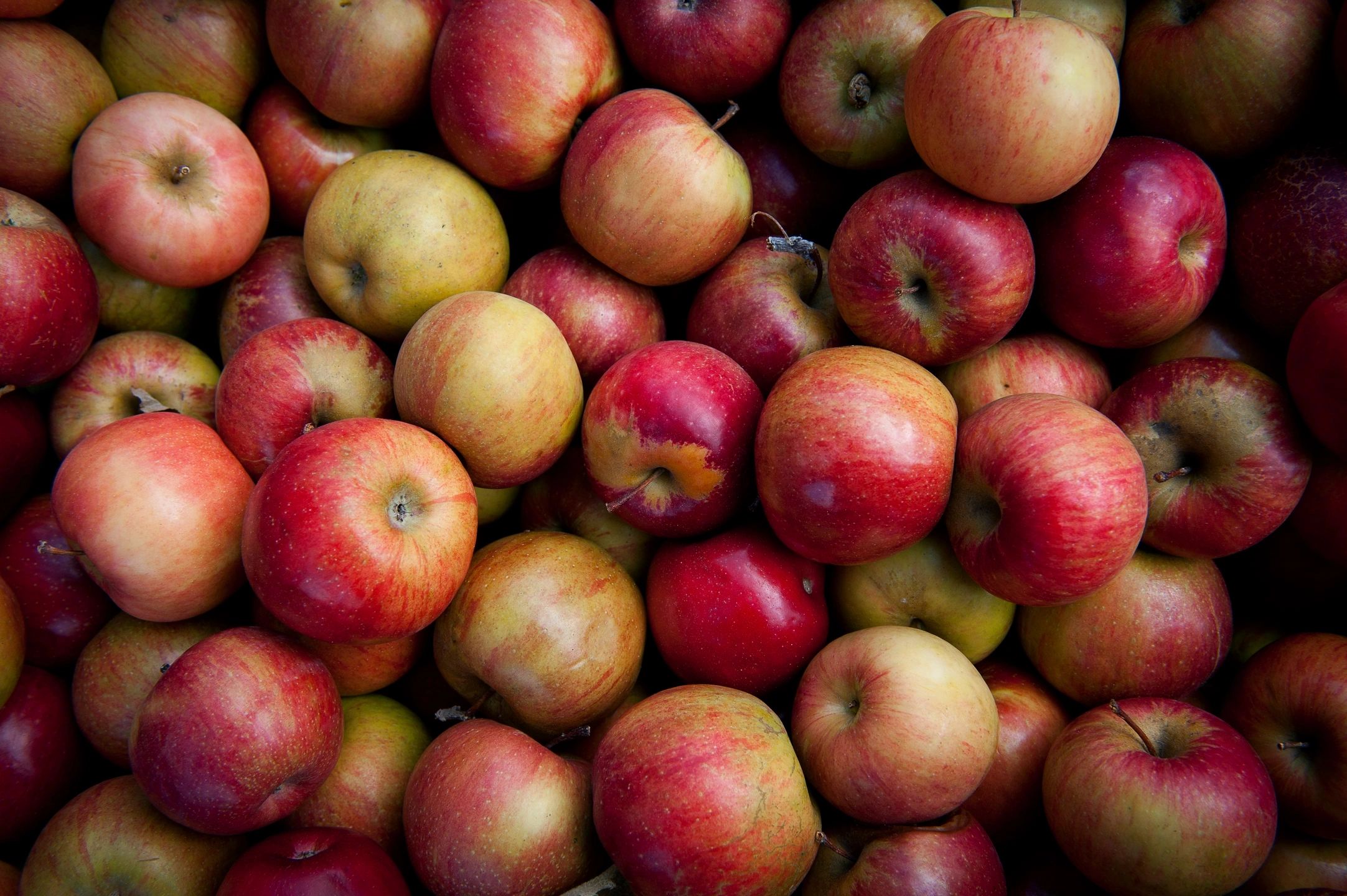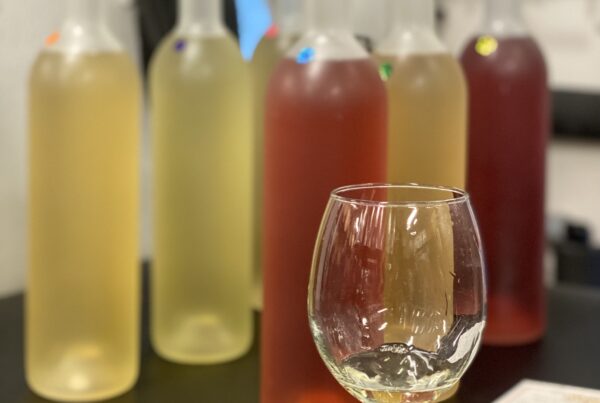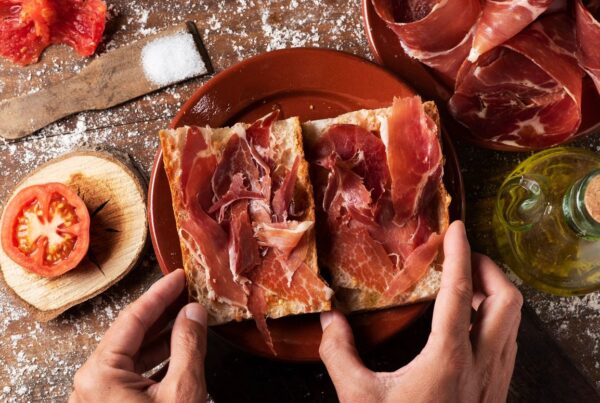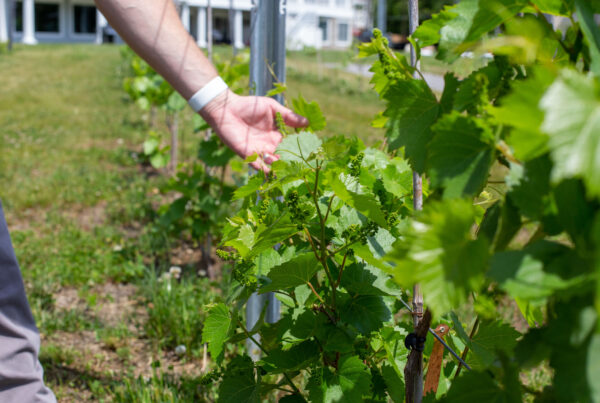Cider Making with Nate
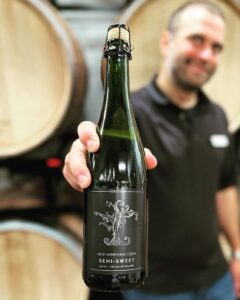 Our Cider season, here at Rhythm, keeps rolling on. All of our tanks are full and we are excited to start bottling some of our newest vintages of cider. Our first bottling will be of something new for us; a rose cider. We took some of our Original Cider from last year and stored it in a few red wine oak barrels for about three months. Then we blended in just a touch red wine to give a little boost to the color and flavor. I have a feeling this one will quickly become one of my favorites. Cheers!
Our Cider season, here at Rhythm, keeps rolling on. All of our tanks are full and we are excited to start bottling some of our newest vintages of cider. Our first bottling will be of something new for us; a rose cider. We took some of our Original Cider from last year and stored it in a few red wine oak barrels for about three months. Then we blended in just a touch red wine to give a little boost to the color and flavor. I have a feeling this one will quickly become one of my favorites. Cheers!
For this article, we went into the winery to ask Nate Maser, Winemaker, all about cidermaking. Here’s what he had to say.
Why is winter the best time to make cider?
There are a few reasons why this is true for us. One cider apples are generally harvested starting in October all the way through November. Apple’s keep in cold storage extremely well; think about the apples you buy from the store and how long they last in your fridge compared to other fruits. So since apples keep so well I am able to get apples and make cider all winter long. Two, our cidery shares the same production space with our winery. Grapes are all harvested at the same time, given slight variations for growing season and type of grape, and do not keep for more than a week or so in cold storage. This means wineries have to make all of their wine from a given harvest at the same time. So from the end of September through October all of my tanks are filled with red wine. After about a month or so the red wine is transferred to empty barrels and it opens up my tanks so I can start bringing in apple juice (sweet cider) from our orchards and begin fermenting the apple juice into hard cider. So in our case I have to make Rhythm ciders in late fall through winter. Third, the cold outside temperatures are advantageous for a slow fermentation.
So temperature is pretty important when making cider?
Yes, I would say so. Yeast are temperature sensitive. So the warmer they are, the quicker they eat sugar and make alcohol. I always compare this to kids on a playground; when it’s hot out kids are running around, playing games, and generally more active. When it’s cold out kids tend to stand in a circle and talk more. The quicker, and warmer, a fermentation is, the more likely I am to “burn off” the really good apple flavors we love in our ciders. Also when aging cider, I treat it a lot like wine, I want it to be around 60 degrees.
In other words the temperature of the cider has an effect on the rate of fermentation. How long does fermentation normally take? How long does fermentation normally take?
Yes, exactly. In ideal conditions, perfect amounts of nutrients and temperature, my fermenations have been lasting between two and three weeks. Right now most of my tanks are not temperature controlled so the only way to control the temperature of the cider in the tank is to control the temperature of the room. Fermenting in the winter months means I can open the vent to the outside and drop the temperature of the whole room; which in turn will lower the temperature of the cider I am working with. It makes for better cider in my option but it does mean we are bundled up while working in the production room. But as any cider maker will tell you our personal comfort comes second to that of the cider.
What types of things do you want to avoid when making cider?
Talk about a convoluted question. I’m looking to avoid too much or too little oxygen. Making sure that the yeast does not have too much nutrient while at the same time making sure that I’m not starving the yeast of it either. Avoiding the temperature of the cider from being too hot or too cold. Basically I’m walking a tightrope in the cidery and I want to make sure I don’t fall off either way.
How do you know when it's ready to be bottled?
There are a couple of different things I’m paying attention to when deciding if a cider is ready to be bottled. The most important thing is how it tastes and how it smells. If it tastes and smells similar to the vision of it that I have in my head then it’s ready to go. There are other variables of course, but this is the main thing. Unless and until I deem that it’s the best cider I can produce, taking into consideration all variables, the cider does not get bottled and or released. Some very basic things I do keep my eye out for is weather fermentation is completed, sugar levels are no longer dropping, the yeast are no longer producing CO2, the color of the cider. All of these things will give me a good indication of whether fermentation has completed yet or not. Is the carbonation of the cider where I want it to be. There are several ways to carbonate your cider, we used the forced carbonation method which takes a week or two conditioning to achieve the level and integration I am looking for. Overall though, does it taste and smell right? That is the true deciding factor.
Do certain apples make a cider taste different? (Sweeter/drier?)
Oh, most definitely. Cider is a lot like wine in terms of grapes or hops with beer. Different varieties of apples will have different flavors, sweetness, tannin, acids, phenolic compounds, ect. All of these factors play a large role in how the end product will taste; just like a Macintosh apple taste different from a Granny Smith. Traditional cider apples are what most people would consider a crab apple in the states. These apples are much smaller and therefore have less juice which means the concentrations of these variables will be higher making for a better cider. While dessert apples, or the type of apples one buys at the grocery store, or goes apple picking for, are grown for taste of the apple itself. While cider apples are generally not as enjoyable to eat, but make an exceptional cider.
Can someone at home make their own cider?
100%, if someone has dedication, patience, and a few key supplies. If you look at the history of hard cider in this country almost everyone with a little bit of land would have at least one apple tree. They would take these apples to the local cider press and head home with the apple juice. The kids would drink the sweet juice and the parents the hard cider. The key supplies are access to unpasteurized sweet apple cider, an appropriate vessel for fermentation and storage, thermometer, hydrometer, small amount of yeast (not necessary but recommended), and a little bit of food grade hose. These items would be the bare necessary and they can all be found at a local wine or beer supply store or online.
How long is the process from start to finish?
This question has quite a few different variables to consider in order to answer; which you can see a little bit from my previous answers. For example Rhythm Cider has a premium line that we released last year. These ciders are aged for as close to a full year as I can manage before they are released. Our Original Rhythm cider is barely aged at all and can be released around two months after we get the sweet apple juice into the production room. If you’re making it at home and do not want to deal with worrying about spoilage you could start drinking it in as little as three to four weeks.
Do you make cider in the summer? If not, why? If yes, can you tell the difference with the finished product?
Cider is generally not made in the summer because there are no fresh apples. The apples that have been kept over winter have been used up by late spring or early summer.

